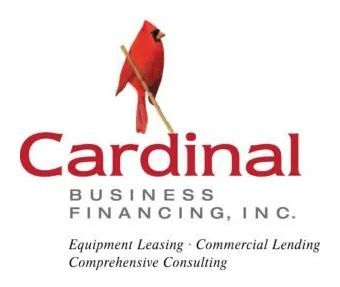The Paycheck Protection Program (PPP)
got off to a bad start last Friday , creating a lot of frustration and anger. Caught short by an aggressive timeline, many banks still haven’t started taking applications. Even where the program is up and running, banks and applicants are still struggling to understand exactly how the process will work.
Let’s assume that banks will eventually figure out the details. Business owners can get ready by gathering the information they’ll need. And while many elements of the program are still developing, you can count on one thing: The bank you’re working with is going to ask for your payroll costs. They will use them that figure to figure out the maximum amount that they can loan you.
Sound simple, right? Not so fast. The new law and regulations expand the definition of payroll in significant ways. Calculating these costs has gotten more complicated. Let’s look at what you’ll need to include in your payroll calculation.
A lot of this hasn’t been nailed down yet. Things are changing rapidly.
Some of the laws and regulations contradict each other . But here I’ll give you my best interpretation. Use it as a guide and adjust as necessary for your specific bank application.
Calculating the maximum amount of your loan
The maximum amount you are allowed to borrow under PPP is the lessor of $10M or 2.5 times your payroll costs. The
Interim Final Rule released last Wednesday gave a step-by-step calculation:
The way you calculate your payroll costs depends on how your business is set up. We’ll talk about that in a minute. But a key element to remember is Step 3 is for your average monthly payroll costs and the total after step 5 is the maximum amount of your loan.
Payroll costs for independent contractors and sole proprietors with no employees
If you’re an independent contractor or sole proprietor with no employees, the calculation is a little easier.
The regulation defines “payroll costs” as wage, commissions, income, or net earnings from self-employment or similar compensation
. For the majority of you, that number will be your net self-employment income – your income after you deduct your business expenses.
Let’s say for the previous rolling year, you made $90,000. Going through the steps would look like this:
Your average
monthly payroll costs are $7,500
and the
maximum amount of your loan is $18,750 .
Now let’s assume your net-self-employment income was $150,000 and you happen to have $5,000 left on your EIDL after you subtracted your advance. In other words, you got a $15,000 loan and the $10,000 advance. (I’ve yet to hear of anyone getting this, but let’s calculate how it would work conceptually.) Your steps are:
You
average monthly payroll costs are $8,333.33 and the maximum amount of your loan in this situation would be $25,833
. This would also refinance your
EDIL into your PPP loan . The cap makes the calculation pretty straightforward for sole proprietors and independent contractors making over $100,000. The maximum you can get is $20,833, if you’ve not gotten the EIDL loan.
Before the regulations came out, the language of the CARES Act counted “payments to” independent contractors as payroll costs. However, since then, the regulations have expressly excluded contractor payments as a payroll cost. In somewhat of a contradiction, all applicants must certify that they “had employees for whom it paid salaries and payroll taxes or paid independent contractors, as reported on a Form 1099-Misc.” We hope and expect the government will clarify these contradictions soon.
Payroll costs for businesses with employees
For those of you with employees, the calculation has additional variables. Payroll costs for you include.
In addition to including the additional payroll costs, the Act expressly excludes the following
In short, this calculation includes wages and benefits. I’ve seen clients already miss the fact that they can add group health coverage and retirement contributions. You’ll also have to make sure you’ll be able to separate out the federal, state and local taxes that you pay on local income. (
Some groups are fighting to have federal withholding and employee FICA included as well .)
Many tax and financial professionals are debating whether the $100k compensation requirement includes the benefits paid to individual employees. My take is that it doesn’t because of the words “annual salary.” Salary doesn’t usually include the value of benefits. Additionally, calculating all of the benefits would require you to separate out each employee’s health insurance and state and local taxes. As with the other gray areas, reasonable minds, including your lender, may differ.
An example may help here. Let’s say you’ve paid $300,000 in total compensation to employees, none of whom have an annual salary over $100,000. Additionally, you paid $20,000 in health insurance and $10,000 in state and local taxes. And you’ve not received an EIDL loan. Your steps look like
Your average monthly payroll costs are $27,500 . The maximum amount of your loan would be $68,750.
Let’s say you’ve paid $1,000,000 in total compensation to employee, three of whom have an annual salary of $150,000. Additionally, you paid $50,000 in health insurance and $30,000 in state and local taxes. Lastly, you $15,000 left on your EIDL beyond the advance:
Your average
monthly payroll costs are $77,500
and
the maximum loan amount is $203,750 .
Pitfalls to avoid
Obviously, this is not straightforward. Florida Senator Marco Rubio
tweeted over the weekend
that clearer regulations are coming early next week. However, with more and more bank applications getting up and running, I want you to be as prepared as you can be, as soon as possible. That’s important because these loans are granted on a first-come, first-serve basis. Here are a couple of issues to watch out for.
Supporting documents
In addition to being able to calculate your monthly payroll costs, you’ll need to provide supporting documents. These documents include:
You will also need similar documentation for the loan forgiveness. Remember that in order to be forgiven, no more than 25% of the loan proceeds can be spent on non-payroll costs.
What time frame do I run my numbers for?
In section 2(e)(i) of the interim final rule, it instructs borrowers “aggregate payroll costs from the last twelve months,” which presumably means April 1, 2019 – March 31, 2020. However, a little further down in Section 3(b)(iii), the rule instructs lenders to confirm the “average monthly payroll costs for the preceding calendar year.” The final borrower application form also gives that time frame.
Right now, different banks are asking for different time frames. Bank of America has asked for a payroll report for 2019, payroll from January 1, 2020 through February 15, 2020 and independent contractor costs for 2019 (there’s that independent contractor issue again).
That means you’ll need to find out what your specific lender is asking for. If you can’t find anything, have 2019 numbers, as well as the last 12 months, so you don’t have to waste precious application time rerunning your profit and loss.
What am I?
There’s some confusion around the SBA’s language around business structure. Regulations say that small businesses and sole proprietors can apply for PPP on April 3rd but Independent Contractors and self-employed workers have to wait until April 10th. I think the intention was to allow businesses with employees to file first. It appears the
EIDL advances are also now based on the number of employees you have.
Do I count partnership guaranteed payments? What about S-Corp distributions?
The regulation says “ salary, wages, commissions, or similar compensation.” I read the catch all of “similar compensation” to include both of these payments. Your lender may have a different perspective, so you should definitely ask her or him.
This seems complicated. Can I pay someone to put this together for me?
There are already a lot of people creating companies that serve as agents, helping you put an application together. That’s completely fine;
however, that person is not allowed to collect fees from you or be paid out of the loan proceeds . See Interim Final Rule 4(c). The agent needs to collect their fee from the lender.
I hope that helps get you prepared to apply for your PPP loan when your bank is up in running. Also remember that we are all in this together trying to figure this out, including the government and the banks. So, share your successes and challenges with me at the links below. I can use that information to help others who may be struggling too.
The post
How To Calculate Payroll Costs for the PPP Loan appeared first on
Cardinal Business Financing, Inc. .








